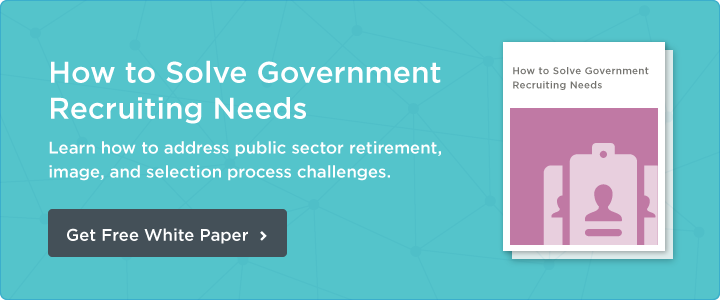Finding ideal candidates is an ongoing challenge for every HR department. Fortunately, HR has tools at their disposal. One of those tools is often under-utilized. What's that tool you might ask? —Candidate personas... think of them like a wanted poster for your ideal hire. If you follow the suggestions below and take the time to really map out what you’re looking for in a candidate, job candidate personas are likely to become one of your go-to HR tools.
Why are candidate personas vital for the public sector?
Talent personas are a research-driven approach to understanding your target candidates. If you don’t know what you’re looking for in a candidate, you’ll have a hard time communicating with potential hires, creating a job post, and sifting through hundreds of resumes to find that one perfect fit. By creating talent personas, you can:
• More efficiently eliminate the candidates who don’t fit what you’re looking for
• Better connect with your ideal candidate by reaching them on their ideal platform and speaking their language
• Improve retention
• Get potential candidates excited about your company and position
• Give interviewers or hiring managers a better idea of what to ask a candidate during an interview
• Create greater alignment between your team managers and HR function
Candidate personas are perhaps most important for positions that are difficult to fill and require specialized skills or experience, or for those positions that are frequently hired for or require multiple hires. Having talent personas on hand in these instances can help reduce stress for the HR team and improve the quality of those hired.
How can I create a talent persona?
Creating a talent persona should be a lynchpin in your human resources planning efforts. The best time to start creating these personas is before a position ever becomes available. This will help speed up the hiring process when the time comes, and better ensure that the right candidates are invited for interviews. Getting down on paper a portrait of a team’s, manager’s, or even the organization’s ideal candidate is a multi-step process, and there are a number of different methods you can employ. However, the basic steps to creating a talent persona include:
• Meet with managers to identify their needs: Ask your organization’s leaders not only about the qualities they would like to see in a new hire, but also ask about the traits of their most successful employees. Get a sense of the culture within the department or team and how it reflects the overall interests or goals of the group.
• Identify current employees who reflect some of the ideal candidate’s desired qualities: Invite groups of employees to share their experience with HR. Talk about their background, education, prior positions, experience with the company, interests, motivations, goals, and what has kept them in their current positions. Also ask these employees where they spend most of their time online (this will help you better speak the language of your target candidate as well as determine where to find them).
• Use social media to your advantage: Looking at professional networking sites can help you locate candidates that would be a good fit for your organization, and you can then review their experience, education, and skills. Further, think about who this person might be in a year or two, and how that might serve the goals of the organization.
• Network: Attend functions both within and outside of your organization and ask attendees questions about what they know about your organization and what they find most appealing.
• Reach out to those who have applied in the past: Ask the former candidates why they were interested in the position, what drew them to the organization, where they ultimately ended up working, and which of their characteristics they felt were best suited to your organization.
• Create a “real” person: I mentioned at the start that you should think of the talent persona as a wanted poster. Give your ideal candidate a picture and a name, and then fill in ideal qualities like education, skills, experience, and background. This helps your interviewers better connect and personify that ideal candidate, rather than just seeing a bullet point list of qualifications.
As a final note, it is important that your talent personas are living, breathing things. They should be reviewed regularly, and updated as the position duties are amended or as the ideal candidates change.


